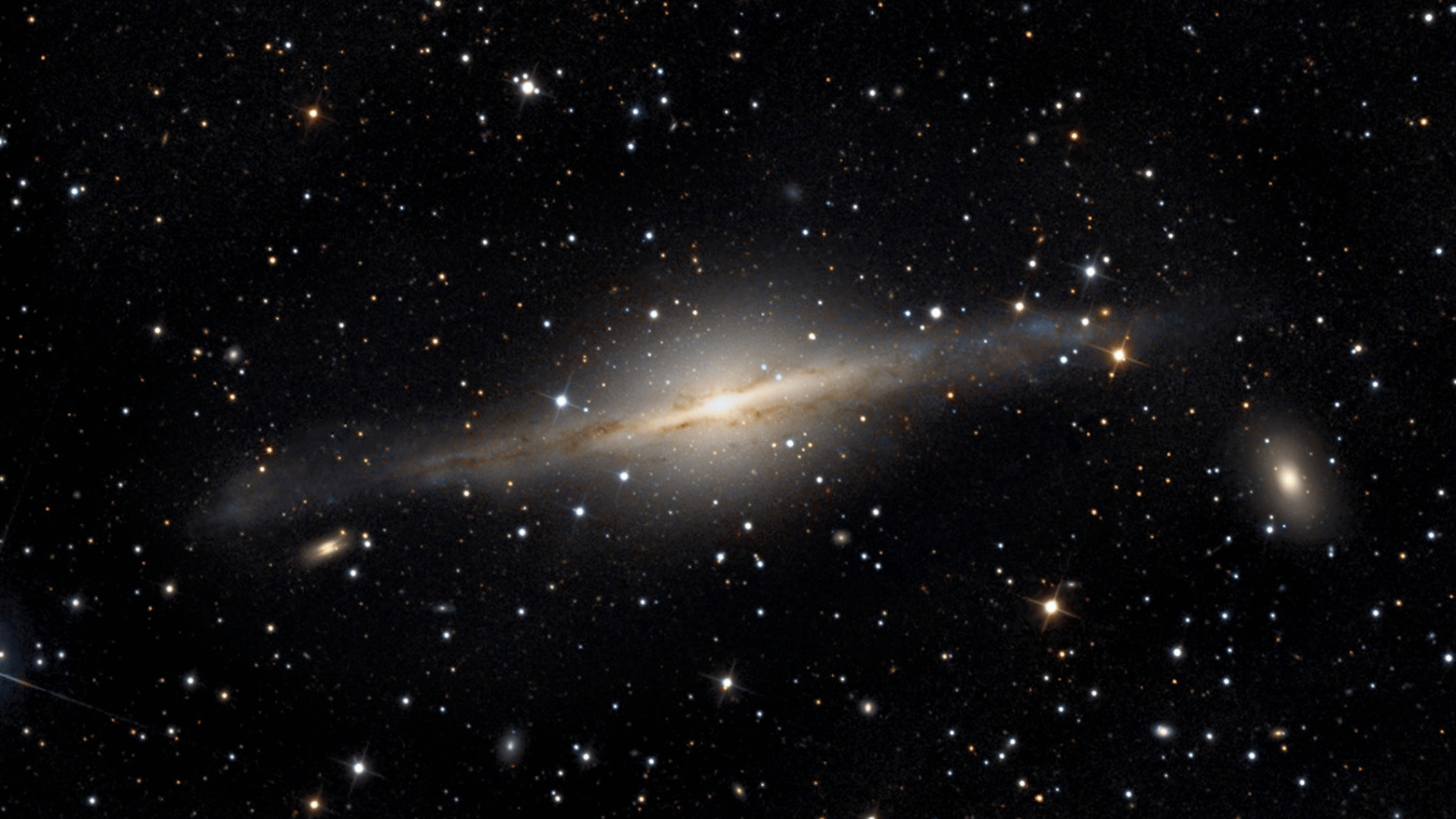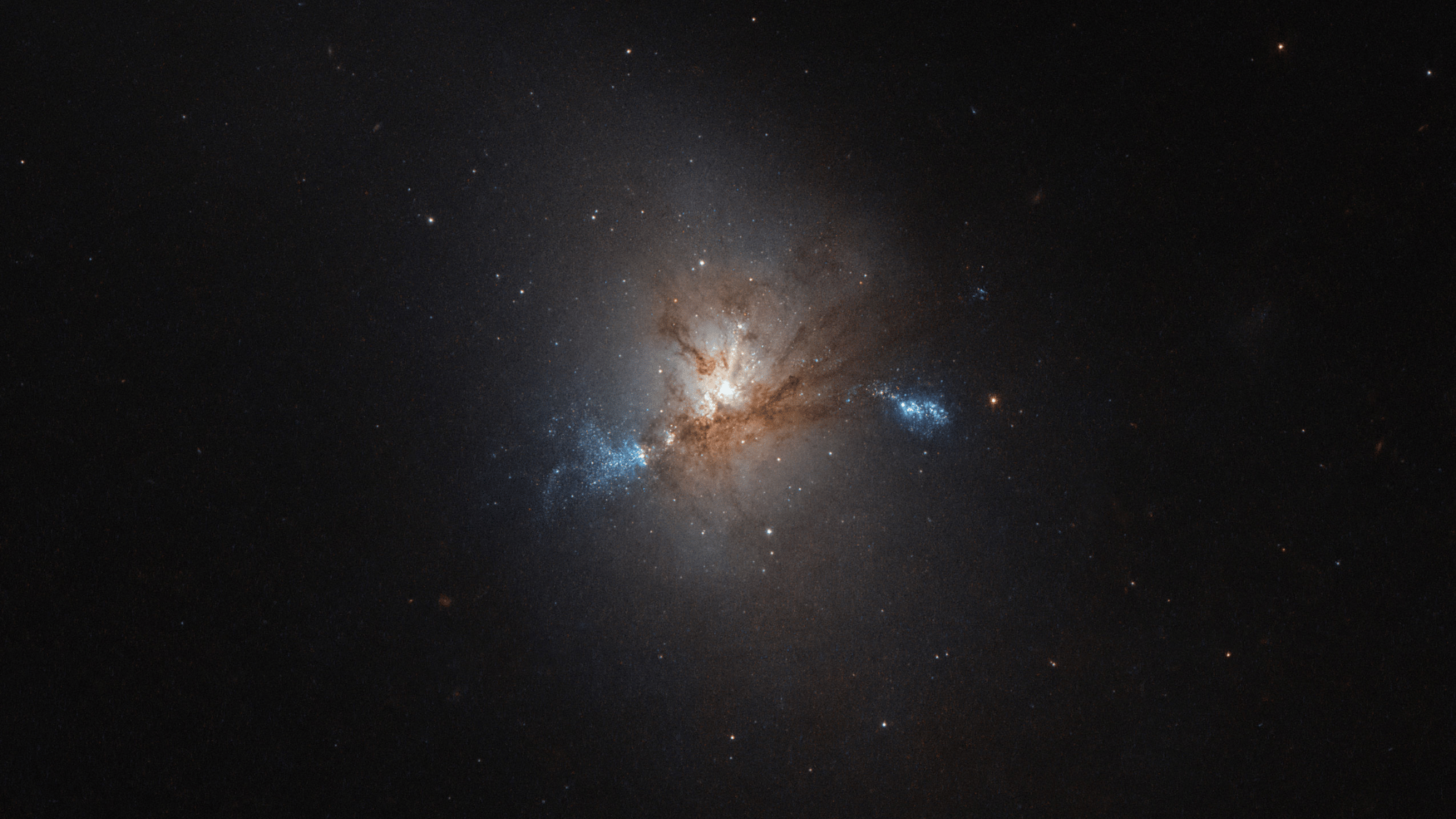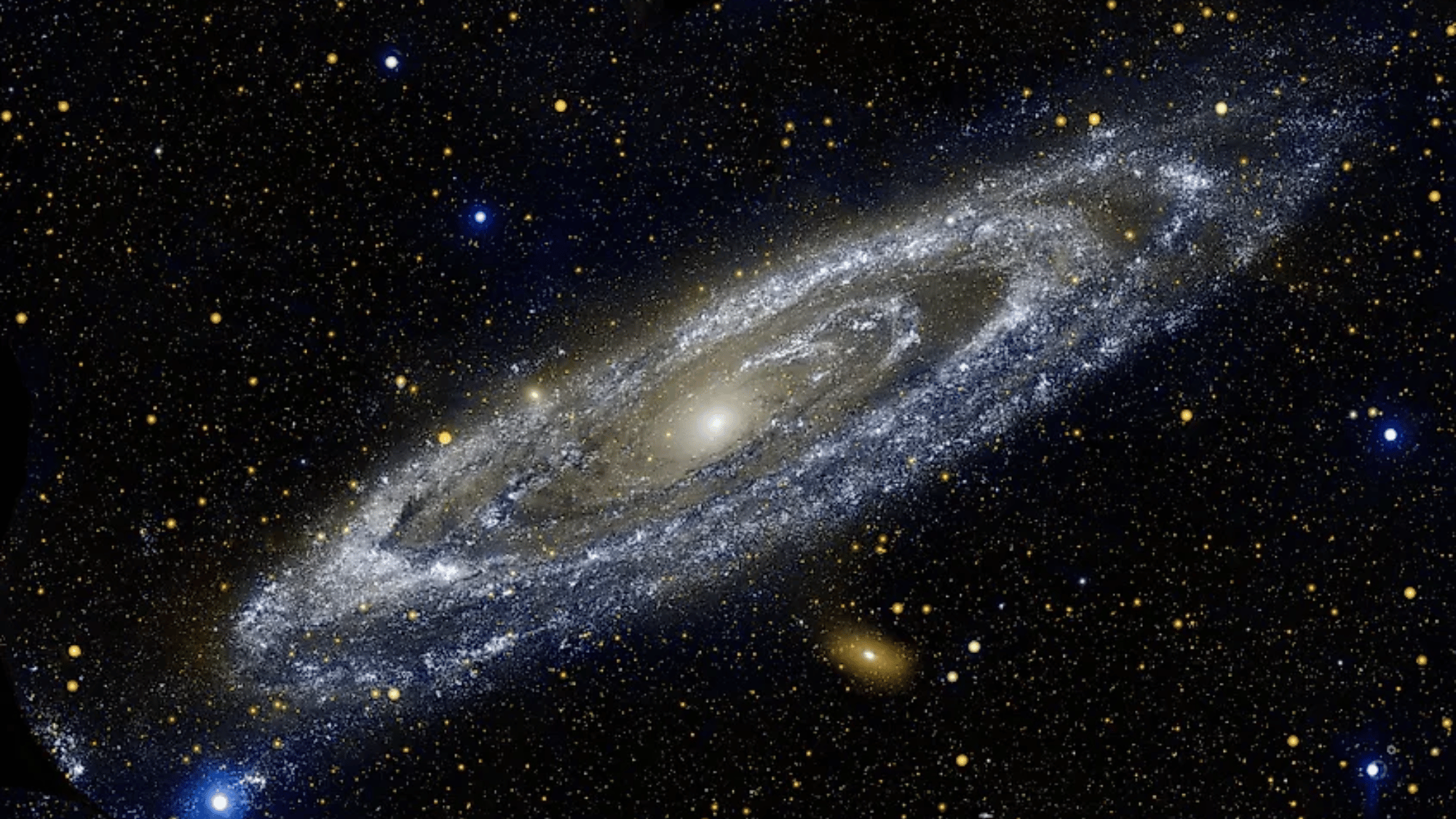Why do some galaxies swirl with shining spiral arms while others glow as smooth, rounded ellipses?
Between these two extremes lies the lenticular galaxy, a quiet yet intriguing type that blends features of both.
With the flat disk of a spiral, yet the subdued appearance of an elliptical or lenticular galaxy, astronomers and stargazers alike are often puzzled and enchanted.
They may not boast the bright arms of star-forming spirals, but their understated structure holds vital clues about how galaxies evolve and change over time.
This cosmic “middle child” continues to interest scientists, thanks to detailed images captured by space telescopes like Hubble.
What is a Lenticular Galaxy?
The lenticular galaxies are often seen as the cosmic bridge between two well-known galaxy types: spirals and ellipticals.
From spirals, they inherit the familiar flat, disk-like shape, but they lack the winding arms filled with glowing, young stars.
Instead, their structure is smoother and more subdued, much like an elliptical galaxy, although with a clearer outline and a more pronounced central bulge.
Because they contain little gas or dust, lenticular galaxies rarely form new stars, which gives them an older, more settled appearance.
Astronomers sometimes call them the universe’s “middle child,” quietly sitting between the brilliance of spirals and the simplicity of ellipticals.
This makes them especially important for understanding how galaxies transition, evolve, and eventually age.
How Lenticular Galaxies Form?


Image Source: Friends of NASA
A lenticular galaxy has a distinctive structure, consisting of a bright central bulge surrounded by a thin, disk-like layer of stars.
Unlike spirals, these disks contain little to no interstellar gas or dust, the essential ingredients for creating new stars.
Because of this, lenticular galaxies are often filled with older, aging stars rather than clusters of bright, young ones.
When compared to other galaxies, they sit right in the middle.
They resemble elliptical galaxies in their smooth, subdued appearance, yet they still retain a more organized structure.
This blend of traits is what makes lenticular galaxies so scientifically intriguing.
Scientific Studies About Lenticular Galaxies


Image Source: SciTechDaily
Scientific studies of lenticular galaxies utilize space missions such as Hubble, Webb, and Chandra to reveal their structure, star populations, and evolution, providing vital insights into how galaxies transform over time.
Hubble Space Telescope (HST)
The Hubble Space Telescope has provided high-resolution images of lenticular galaxies, allowing astronomers to study their disks and central bulges in remarkable detail.
These observations revealed smooth stellar distributions, faint dust lanes, and even subtle ring-like features.
Hubble confirmed that many lenticular galaxies are dominated by older stars with little active star formation.
Its detailed imaging has been essential in showing how these galaxies, while calm in appearance, still hold valuable evidence of galactic history and transformation.
James Webb Space Telescope
The James Webb Space Telescope extends our view of lenticular galaxies into the infrared spectrum, giving astronomers the ability to study faint, cool stars and residual dust.
By probing deeper than Hubble, Webb helps determine when these galaxies likely shut down their star-forming activity.
Its powerful instruments allow scientists to reconstruct a timeline of stellar populations, revealing the processes that shaped these galaxies long ago.
Webb is expected to provide transformative insights into galactic aging and evolution.
Chandra & XMM-Newton (X-ray)
X-ray observatories like Chandra and XMM-Newton have revealed the presence of hot gas halos and energetic processes within some lenticular galaxies.
These findings are particularly important in dense galaxy clusters, where environmental factors such as ram-pressure stripping and tidal interactions can strip away gas.
This loss halts star formation and speeds up galactic evolution.
By detecting high-energy activity, these missions confirm that lenticular galaxies are strongly shaped by their surroundings, offering a window into the role of environment in galactic change.
GALEX (Ultraviolet)
The GALEX (Galaxy Evolution Explorer) mission added an ultraviolet perspective to the study of lenticular galaxies.
While most lenticulars are thought to be quiescent, GALEX occasionally detected faint ultraviolet light, suggesting small amounts of recent star formation.
These hints of activity could come from minor gas accretion events or weak bursts of late-stage star birth.
These observations challenged the idea that all lenticular galaxies are entirely “dead” and highlighted the complexity of their evolutionary paths.
Spitzer & Herschel (Infrared)
Infrared observatories like Spitzer and Herschel have helped astronomers measure dust and cold gas content in lenticular galaxies.
Though usually weak, these signals are detectable in some systems, allowing scientists to refine estimates of dust temperature, gas density, and any residual star formation efficiency.
By combining infrared data with optical and ultraviolet studies, astronomers can gain a better understanding of the amount of material remaining in lenticular galaxies.
This multi-wavelength view adds depth to the story of their slow transformation.
The Evolution of Lenticular Galaxies
Lenticular galaxies act as cosmic bridges, revealing how spirals transform into calmer systems. Studying them helps astronomers understand galaxy evolution and the universe’s long-term changes.
- Clues about galactic aging: Show how active, star-forming systems gradually fade into calmer, older ones.
- Evidence of transformation: Reveal how environment and cosmic events influence galaxy structure and evolution.
- Role in cosmic evolution: Offers insights into how the universe itself changes and develops over billions of years.
Conclusion
Lenticular galaxies may not command attention with shining spiral arms or the massive scale of ellipticals, but their uniqueness makes them invaluable to astronomy.
Sitting between two galaxy types, they serve as a reminder that the universe is filled with transition and transformation.
Scientists continue to study them to unlock clues about galactic aging, evolution, and the broader changes shaping the cosmos.
They may not be as flashy as spirals, yet they quietly hold cosmic secrets worth finding that deepen our understanding of how galaxies, and ultimately the universe itself, evolve over time.
Frequently Asked Questions
How Did Edwin Hubble Classify Lenticular Galaxies?
Edwin Hubble placed lenticular galaxies between spiral and elliptical galaxies in his “Hubble sequence,” highlighting their transitional role in galactic evolution.
Can Lenticular Galaxies Still Form New Stars?
Most lenticular galaxies form very few or no new stars because they lack the gas and dust needed for star formation.
How Do Galaxy Collisions Create Lenticular Galaxies?
When galaxies collide or merge, their spiral arms can be disrupted, and star-forming gas can be stripped away, leaving behind a smoother, lenticular-shaped system.
How Big are Lenticular Galaxies Compared to the Milky Way?
Sizes vary, but many lenticular galaxies are comparable to or a bit smaller than the Milky Way in overall scale.


















